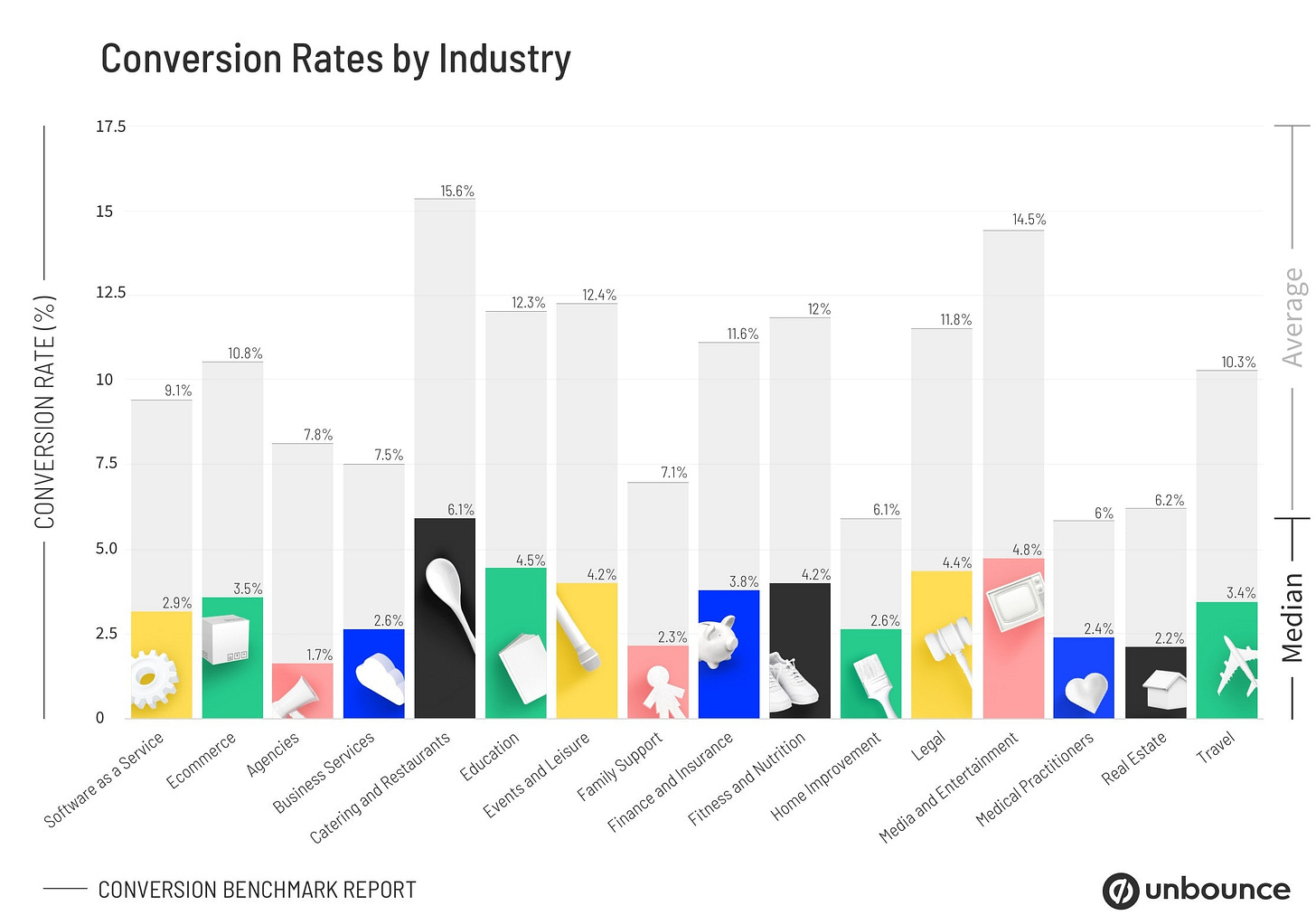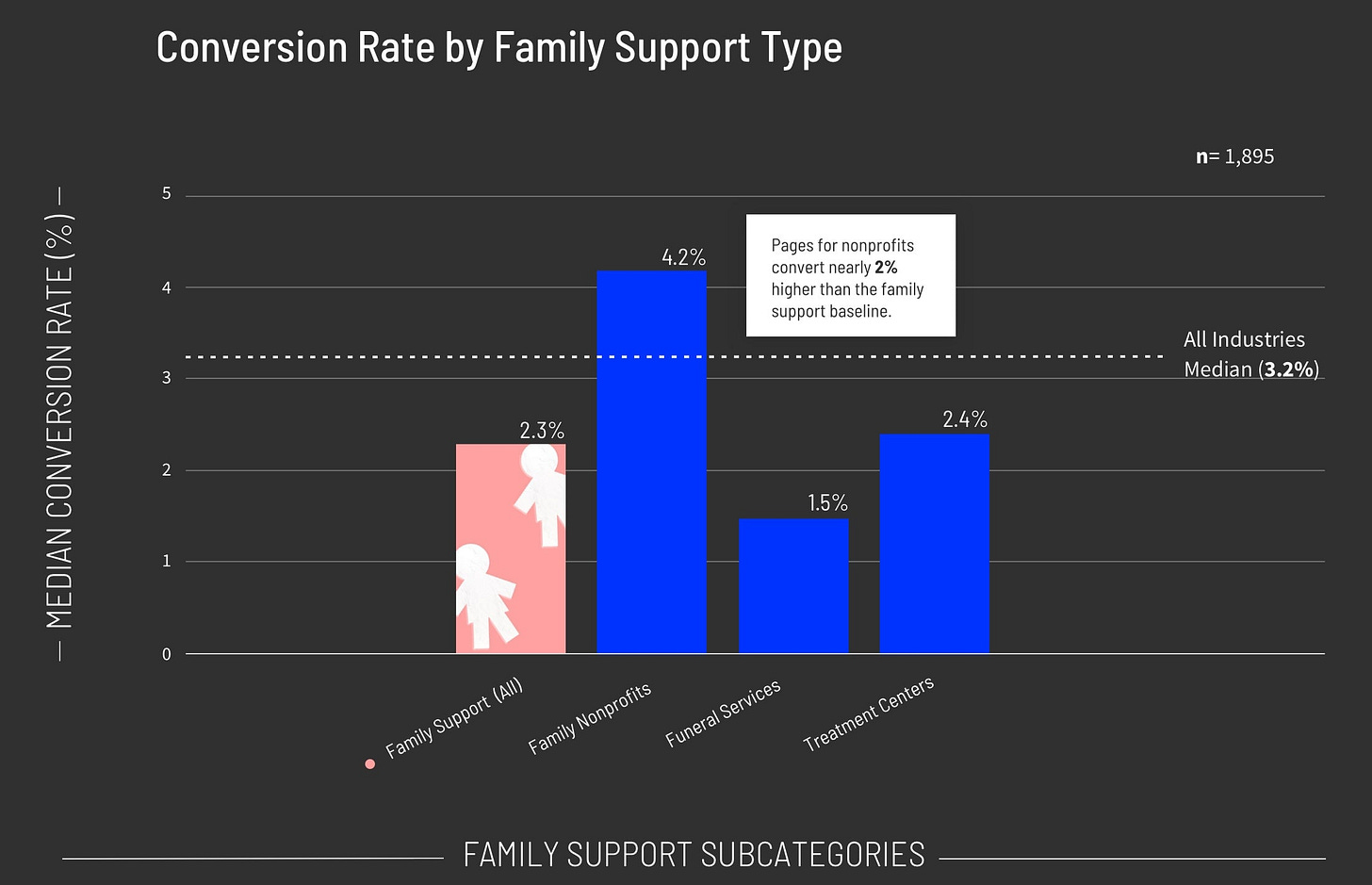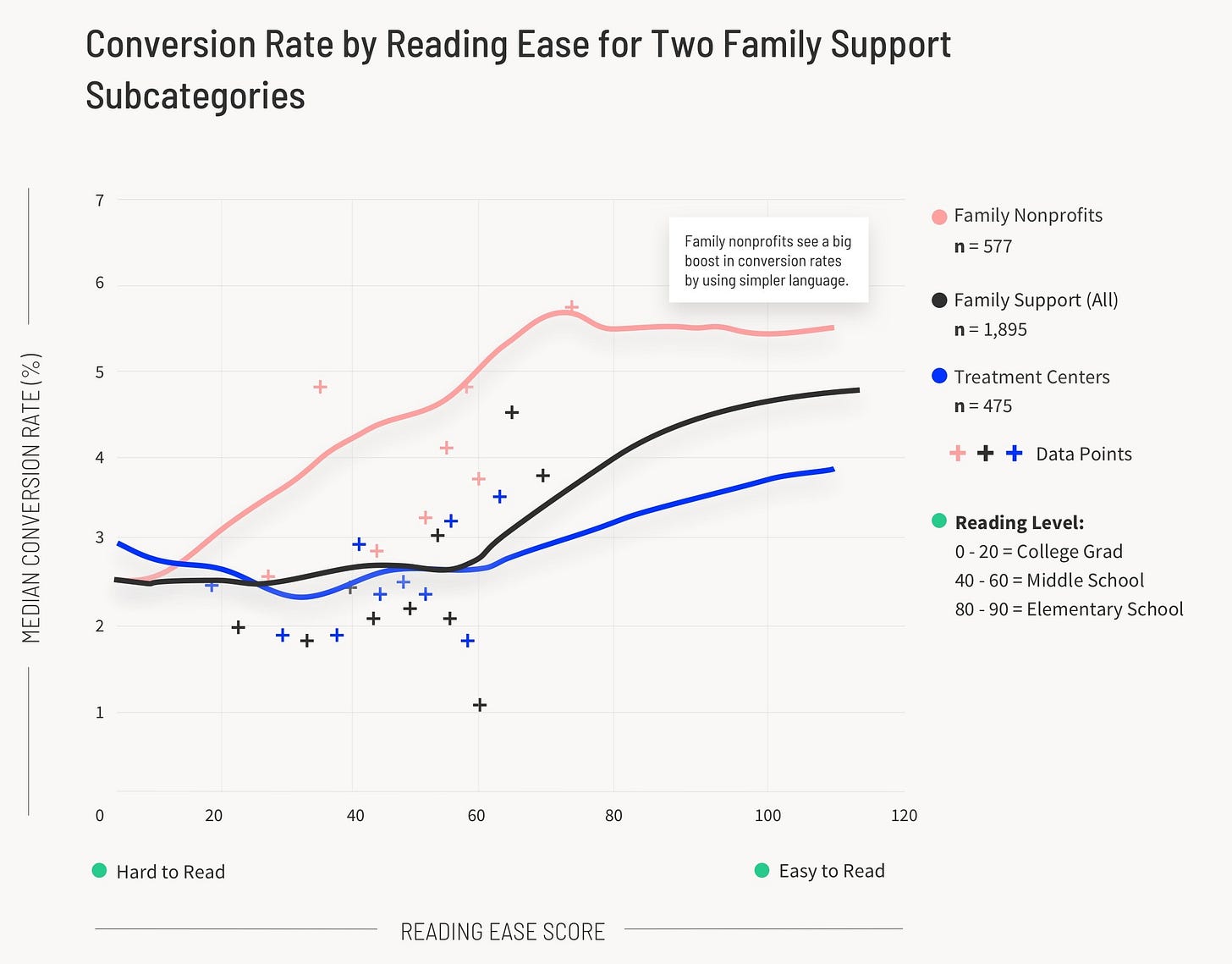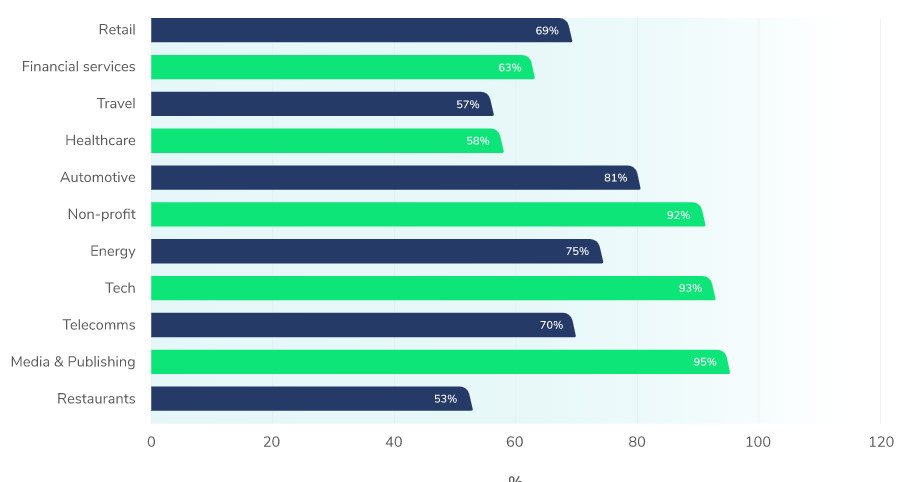The correlation between conversions and digital experience
Understanding what is a good conversion rate in 2020 for nonprofit and for-profit organizations with the Unbounce Conversion Benchmark report
According to the smart minds at Unbounce - a conversion can mean many things.
“It’s an action that you want your visitors to take—like buying, downloading, or subscribing. It can be a new lead, a phone call, or an in-person appointment. But ultimately it depends on your business, campaigns, industry, and goals.”
So the next logical question is: what is a good conversion rate for landing pages? And why do some pages (and industries) perform better than others?
Before I answer the above question this is how the median conversion rates for 16 industries look like:
Courtesy: The Unbounce’s Conversion Report 2020. The report analyzed 34 thousand landing pages into 16 industries and 50 subcategories. The report considers median values and not mean. (FYI: In statistics, the mean is the average of a set of data and the median is the middle value of the arranged set of data. )
The report found out that the median conversion rate for all the landing pages it analyzed is 3.2% (or, expressed as an average, 9.7%). But the top-performers do much better: the median conversion rate of 25% (based on the top 25th percentile).
According to the report when it comes to conversion rates, marketers crave big numbers. “We surveyed 400 marketers in the trenches to see what they expect the conversion rate to be in their industry and what they wish it could be. Almost half of them told us that conversion rates in their industry usually fall between 6 to 15%. (And more than 45% told us they wouldn’t be happy without conversion rates above 15%. Tough crowd.)”
Marketers are not wrong in wanting to deliver higher conversion rates. But how do you do it? That’s where this report comes in.
“Say you’re tasked with improving your landing page performance, and it’s currently converting at 5%. Is that good? Is that terrible? Without knowing the answer, it’s impossible to know how much time and effort to invest in optimizing it. And most teams have no idea,” says Lenny Rachitsky, Growth Advisor & Former Growth Lead at Airbnb.
Family Support and Nonprofits
The report is a delight for data and visual representation lovers. I have seen quite a few reports this year but this one stands out not only for the number-crunching but the effort it has taken to make it visually charming for a layman to understand.
From Ecommerce to Agencies to Education to Travel the reports covers a wide range of industries. Please spend your time in whichever industry you fancy. I will see what is there for the Family Support industry. The closest to the nonprofit sector, according to Unbounce.
“No matter the service or public good that you deliver, landing pages are digital helping hands that can play an essential role in helping you turn a visit into an action. For nonprofits, they’re doubly important as part of digital campaigns that secure crucial donations and volunteers.”
Based on the sampling of,895 pages and 628,471 total customer conversions: the report informs that the median conversion rate for this industry is 2.3%. But the top-performing landing pages convert at 22.1% (based on the top 25th percentile).
Family support includes a diverse number of services and organizations dedicated to helping people in times of need. Unbounce has broken it into 3 subcategories and this how they perform:
The report further highlights: “Nonprofit organizations benefit most from plain language. Our analysis saw truly dramatic differences between how reading ease relates to conversion rates for family nonprofits versus other subcategories, like treatment centers.”
Nonprofits see a steep incline toward better conversion rates when readability improves.
The report informs that it’s worth considering your audience when deciding what reading level you want to hit. For family nonprofits, using simpler vocabulary and shorter sentences likely makes it easier for visitors to understand your goal and, also amounts to better conversion performance.
Digital experience and conversion
Recently I shared my thoughts on the digital experience of brands for nonprofit and profit organizations. In other words how web experience, earned acquisition, user frustration, and engagement play a crucial role in digital experiences for-profit and nonprofit organizations.
According to the Decibel Digital Experience and Conversion: Industry Benchmarks for 2021 in terms of user likelihood to convert, the quality of the digital experience seems to have more bearing in some industries than it does in others. The report correlated Digital Experience Score (DXS®) with Goals to measure the relationship between experience and positive outcomes.
A whopping 95% of goals for media & publishing businesses correlate with DXS®, while the quality of experience does not bear so much on business outcomes for restaurants, with just 53% of goals linking to DXS®. “It could be a user’s tolerance for mediocre online experiences is higher in industries where they stand to gain a unique product from the transaction.”
For a nonprofit, the website’s digital experiences can turn into a donation-generating machine.
Generally, the goal conversion rate for a nonprofit is lower than in other industries, but its correlation to DXS® is higher, which could mean tolerance for mediocre experiences is lower in non-profit than elsewhere – rendering the quality of the overall experience vitally important.
However, the report states that high user frustration is experienced throughout the sector, with lots of rapid scrolling, low engagement, and a poor navigation score with lots of users refreshing the page.
With 8.2% of page views containing instances of user frustration, non-profit generally performs poorly against the 6.5% average of other industries.
It has a relatively low occurrence of bird’s nest behavior, which refers to when a user rapidly shakes their mouse in confusion, unresponsive multi clicks, which typically occur on broken links or buttons, and repeated device rotation, the result of content not fitting the screen.
However, it has a high incidence of rapid scrolling per user session, which in certain contexts signals user frustration.
With digital fundraising becoming a strong option for nonprofits, digital experience will play a significant role. How would you master digital experience? How would you remove user frustrations from the copy of an email or the anxieties from a donation page or for a social media ad copy?
The answer lies in Optimization.
“We need to keep asking ourselves why we are doing the things we are doing. This is the only way we learn and understand our end-user. And the answer to the why is achieved by optimization or endless testing.”
Says Courtney Gaines Vice President at NextAfter while having a candid conversation about donor relationship, value proposition, donor-centric mindset, and why testing is the answer to enhance your digital fundraising.










